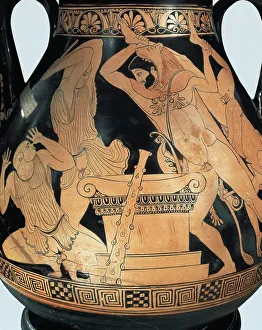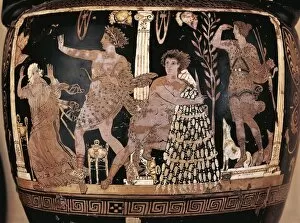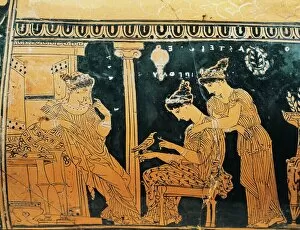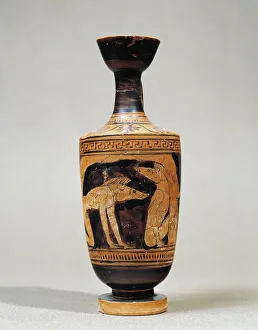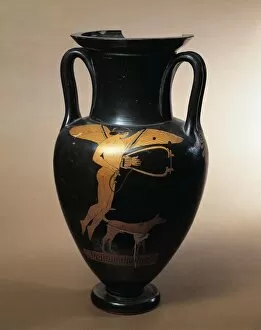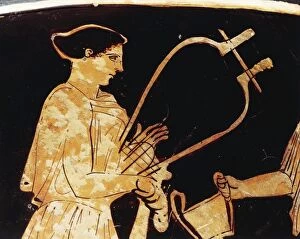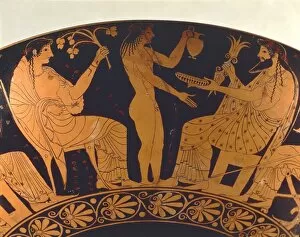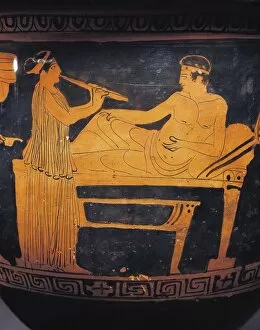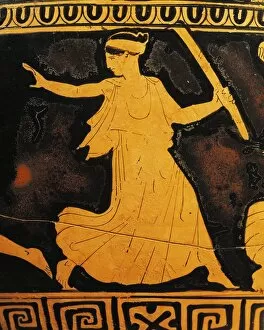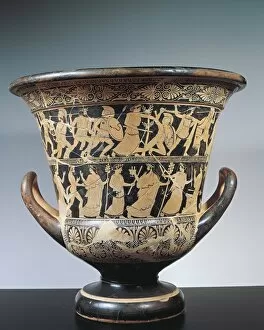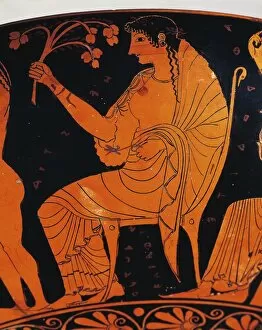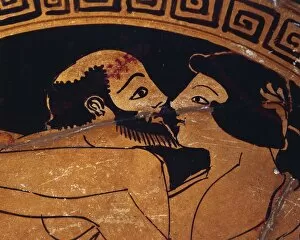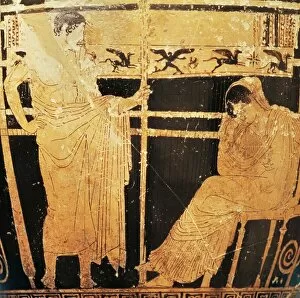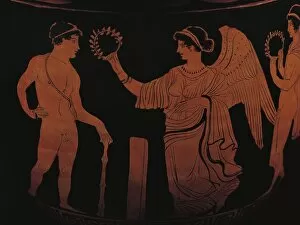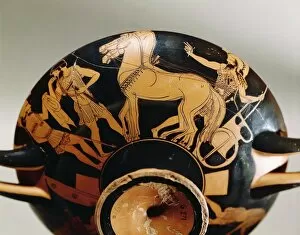Red Figure Ceramics Collection
Red-figure ceramics, a prominent style of ancient Greek pottery, showcase the exceptional craftsmanship and artistic prowess of their creators
All Professionally Made to Order for Quick Shipping
Red-figure ceramics, a prominent style of ancient Greek pottery, showcase the exceptional craftsmanship and artistic prowess of their creators. The Greek red-figure bell krater by Altamura Painter captivates with its intricate detailing and vibrant colors, depicting scenes from mythology or daily life. Similarly, the Attic pelike by Pan Painter portrays Heracles slaying king Busiris and Egyptian priests in a dramatic fashion. The Epinetron by Eretria Painter offers an intimate glimpse into a woman's private moments at her toilet. This delicate piece showcases the artist's attention to detail and ability to capture everyday activities on pottery. On another note, an Attic amphora presents winged Eros with his lyre and faithful dog at his feet—a charming portrayal of love and companionship. In contrast, the Attic lekythos tells a darker tale as it depicts Ulysses' companions transformed into swine by Circewitch. The red-figure technique enhances the intensity of this mythological scene while showcasing the skillful execution of intricate details. Other examples include an Attic pelike illustrating Phrixus saved by a flying ram with its golden fleece—an enchanting depiction that highlights both adventure and heroism. A Krater portraying Apollo defending Oreste from Fury in Aeschylus's tragedy demonstrates how red-figure pottery could bring theatrical narratives to life through vivid imagery. Crowned Dionysus and Ariadne grace another Krater found in Civita Castellana—this masterpiece captures divine beauty intertwined with human emotion. Additionally, we find an exquisite zither female player depicted on another detailed vase—an ode to music as an integral part of ancient Greek culture. A Kylix created by Douris transports us back to 6th century BC Greece—a youthful figure stands near an altar in this remarkable piece that exemplifies elegance combined with religious symbolism.


